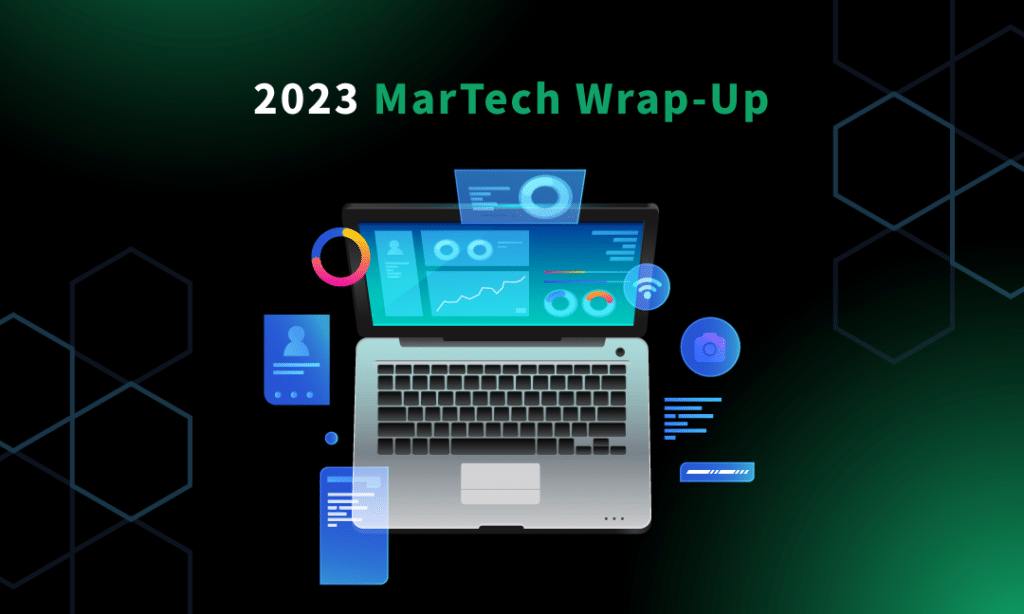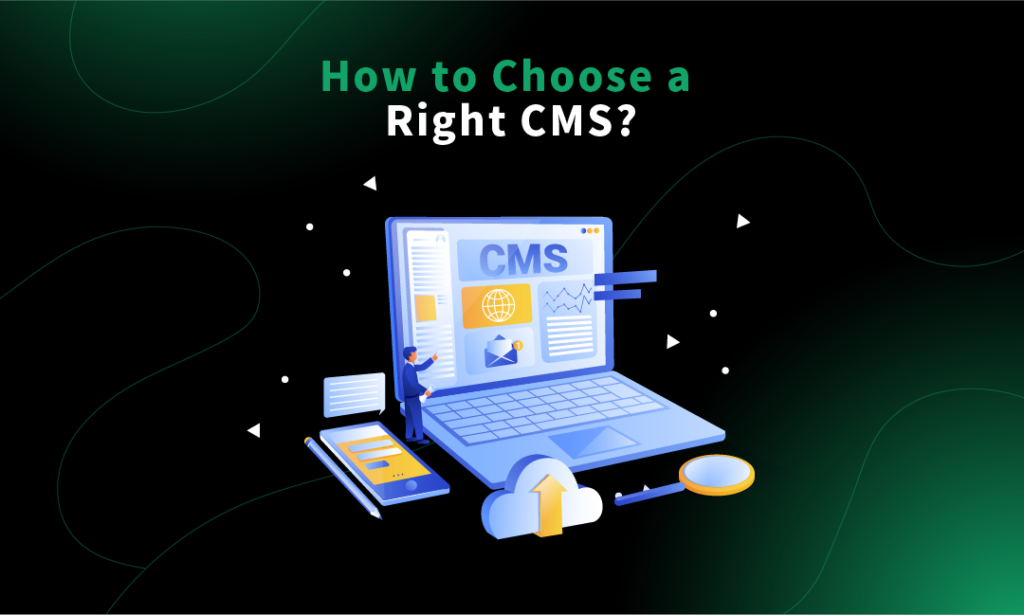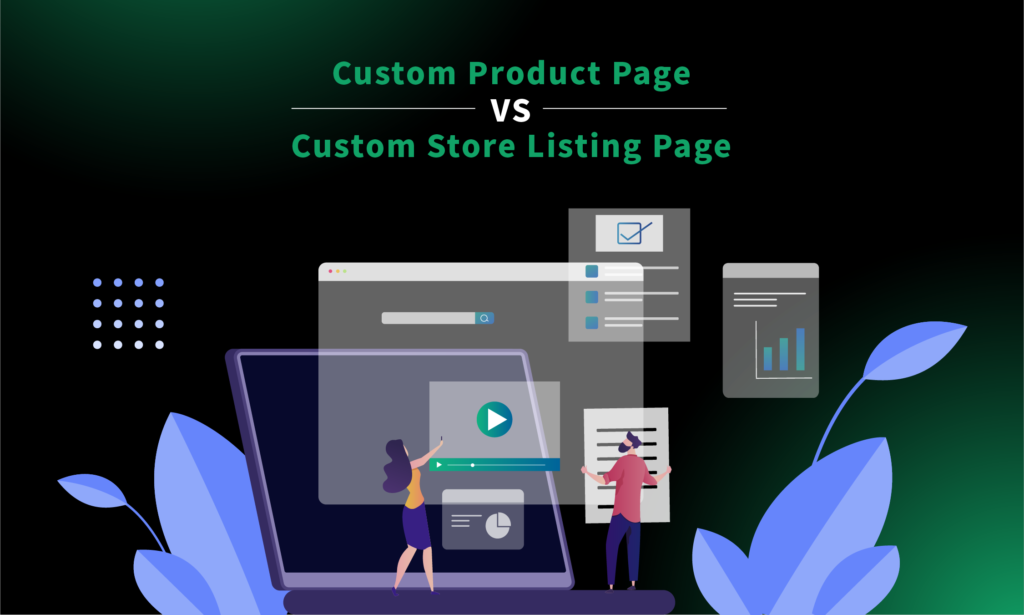The Innovative Path of a HK Digital Marketing Company

GoGoChart’s Venture into Global Markets https://youtu.be/G_myWVW8JUU Video Source: TVB Recently, GoGoChart was part of a delegation led by the Financial Secretary of Hong Kong to visit Saudi Arabia. The team participated in various investment discussions, aiming to establish connections with local investment firms. Daniel Lo is confident about future collaborations, believing that wherever there are smartphones, there is a need for digital marketing services. This visit also showcased GoGoChart’s potential and applications in digital marketing, marking the first step towards entering the Saudi market. Through its innovative AppAura platform and the application of AI, as well as being selected for training at Plug and Play, GoGoChart is leading a new trend in Hong Kong’s digital marketing company. As it expands into international markets, GoGoChart will continue to explore more opportunities for collaboration with various enterprises, driving the development of App Marketing. In the future, GoGoChart is set to shine on the digital marketing stage. About GoGoChart GoGoChart is an eight-year-old digital marketing company based in Hong Kong that has recently been selected for training at Plug and Play, one of the world’s largest startup accelerator platforms. Plug and Play aims to drive innovation by connecting global entrepreneurs, businesses, and investors, allowing GoGoChart to showcase its innovative capabilities in App Marketing. Founder & CEO Daniel Lo notes that GoGoChart originally started as a technology software company focused on developing mobile applications, ultimately transforming into a digital marketing company as it gained experience. Innovative Platform AppAura GoGoChart’s AppAura is an AI-Driven Campaign Management Platform that utilizes artificial intelligence (AI) technology to simplify advertising management and production processes. This platform makes advertising placement smoother, allowing even children to easily grasp its use. Daniel Lo explains that AppAura can analyze a brand’s social media data, extract keywords from past advertisements, and generate relevant ad content, further enhancing advertising effectiveness. Traction & Industry Recognition in the United States of America. https://youtu.be/TJyCvvoJ_bUVideo Source: KTSF Since its establishment, GoGoChart has garnered several awards, including a spot on the 2023 Financial Times list of Asia’s fastest-growing companies and an invitation to be listed on Lightspeed Venture Partners, a multi-stage venture capital firm focused on accelerating disruptive innovations and trends. Our prestigious clientele includes renowned brands such as Uber, Philips, and HSBC. Daniel Lo emphasizes that their success stems not from low prices, but from providing high-quality services, which are the main driver of new customer acquisitions. He states, “Our customer referrals are our biggest source of new clients,” highlighting the trust and satisfaction that GoGoChart delivers. If you’re excited by innovative marketing solutions or breakthrough AI technology, don’t hesitate to reach out! We’re eager to help you explore how our cutting-edge tools can drive your success. Contact us today to start the conversation.
Pioneering AI in Digital Marketing

During his recent tour of the West Coast of the United States, Financial Secretary Mr. Paul Chan visited five innovative Hong Kong start-ups participating in the Hong Kong Science and Technology Parks Corporation (HKSTP) Startup Booster Programme. Among these ventures was GoGoChart, a company that has made significant strides in the field of digital marketing through the use of AI. Showcasing Innovation GoGoChart developed an AI-powered digital advertising management platform designed to streamline the advertising process. The visit by Mr. Chan offered an opportunity for GoGoChart to showcase its latest product solutions and innovations. The Financial Secretary expressed admiration for the entrepreneurial spirit of these start-ups, stating, “These entrepreneurs have demonstrated the courage to think and experiment boldly with innovation, leveraging technology to overcome significant challenges.” Bridging Regions Mr. Paul Chan highlighted the importance of collaboration between the Greater Bay Area and the San Francisco Bay Area, noting that both regions boast exceptional capabilities in innovation and technology. He emphasized that Hong Kong is ideally positioned to act as a “super connector,” facilitating the integration of talent, capital, and technology from both regions. This connection unlocks greater business prospects for all involved, reinforcing GoGoChart’s mission to expand its reach in international markets. Part of a Larger Initiative GoGoChart, along with four other high-potential start-ups, is part of HKSTP’s inaugural Startup Booster Programme. Launched earlier this year, the programme provides these companies with comprehensive training and tailored business development support in Silicon Valley. Partnering with the global innovation platform Plug and Play, the initiative aims to help start-ups penetrate not only the North American market but also other international markets, while actively seeking investors and strategic partners. Looking Ahead The participation in the Startup Booster Programme is a pivotal step for GoGoChart as it seeks to enhance its AI-driven solutions and broaden its market presence. With continued support from HKSTP and the insights gained from industry leaders, GoGoChart is poised to make a significant impact in the digital marketing landscape. As the company progresses, it stands ready to unlock new opportunities and drive innovation within the sector. In conclusion, GoGoChart exemplifies the entrepreneurial spirit and innovative potential of Hong Kong’s start-up ecosystem, making it a noteworthy player in the global digital marketing arena. If you’re excited by innovative marketing solutions or breakthrough AI technology, don’t hesitate to reach out! We’re eager to help you explore how our cutting-edge tools can drive your success. Contact us today to start the conversation.
12 Web Development Trends In 2024

The field of web development is in a state of constant change, making it essential for businesses and developers to stay informed about the latest trends. As we look forward to 2024, numerous advancements are poised to significantly influence the future of web development. By understanding these trends, ranging from new technologies to evolving user expectations, you can create modern, impactful websites. To stay competitive, developers need to keep up with emerging trends and technologies. The future of web development will see the continued rise of progressive web apps, optimization for voice search, increased emphasis on accessibility, and a stronger focus on cybersecurity. According to a recent SWEOR survey, 85% of users expect websites to be mobile-friendly, and 38% will disengage if the layout is unattractive. Furthermore, research shows that faster-loading websites can boost conversion rates by 7% for every second saved. These statistics highlight the necessity of adopting top web development trends in 2024 to meet user expectations and achieve business success. By staying informed about these trends, developers and businesses can stay ahead, crafting cutting-edge, user-friendly web applications that meet the changing needs of users. In this blog, we will delve into 12 web development trends for 2024. So, without further ado, let’s buckle up and dive in. Web Development Trends 2024 Web development trends encompass the latest methods, techniques, and technologies that define how websites and web applications are designed, built, and optimized. These trends arise from changes in user expectations, technological progress, and industry demands. Responsive Web Design is a fundamental trend, ensuring websites function smoothly across all devices and screen sizes. As smartphone and tablet usage grows, users demand websites that are accessible and functional on any device. The mobile-first design approach is another significant trend. This strategy involves designing and optimizing websites for mobile devices first, then scaling them for larger screens, reflecting the increasing prevalence of mobile browsing and the importance of a mobile-friendly user experience. Modern frameworks and libraries, such as React, Angular, and VueJS, have become popular because they streamline development and enhance performance. These tools provide developers with efficient ways to create dynamic, interactive web applications. Website speed and performance optimization remains a top priority. Users quickly abandon slow-loading websites, making speed optimization crucial for a positive user experience and higher conversion rates. Techniques like code minification, caching, and using content delivery networks (CDNs) are essential for improving website performance. Keeping up with web development trends is vital for developers and businesses aiming to create modern, user-centric websites. Staying informed about these trends allows developers to utilize the best tools and techniques to meet user expectations and thrive in the evolving digital landscape. Website History Web development has evolved significantly since its inception in the 1980s. From the rudimentary days of static HTML sites to today’s dynamic and interactive web applications, the field has continually adapted to meet the changing needs of users and businesses. Understanding this evolution provides insights into the future of web development and how to further enhance web experiences. Early Stage of Web Development from the 1980s to 2006 In the early stages, spanning the 1980s to 2006, the internet was in its infancy, and web development was primarily focused on creating simple, static websites. These sites were predominantly text-based, using basic HTML coding with little to no interactivity. The primary purpose of these early websites was information sharing, with limited functionality. The 1990s and early 2000s saw the introduction of CSS and JavaScript, which allowed developers to craft more complex and interactive websites. This period also marked the emergence of databases like MySQL and server-side programming languages such as PHP, which facilitated the creation of dynamic websites. Despite these advancements, web development remained a niche field, heavily reliant on manual coding and basic tools. Growth Stage of Web Development from 2007 – Present The growth stage of web development, beginning around 2007, brought about a significant paradigm shift driven by technological advancements and evolving user demands. The advent of Web 2.0 introduced interactive and user-generated content, enabling users to actively participate in the online environment. The rise of social media platforms like Facebook, Twitter, and YouTube revolutionized online interaction, spurring a surge in web application development. Content Management Systems (CMS) such as WordPress and Drupal democratized web development, making it accessible for non-technical users to create and manage their websites. The proliferation of mobile devices, particularly smartphones, further transformed web development. The necessity for websites to be optimized for mobile browsing led to the adoption of responsive design, ensuring that sites could adapt to various screen sizes and resolutions to provide an optimal user experience. As technology continues to advance, web development is poised for further innovations, including the expansion of Progressive Web Apps (PWAs), the adoption of new programming languages, and the integration of virtual and augmented reality. To meet the rapidly evolving needs of online users, developers must stay abreast of the latest web development trends and tools, creating innovative and user-friendly websites. 12 Web Development Trends to Keep an Eye on in 2024 As we are in 2024, web developers and businesses need to stay updated with the latest web development trends that will shape the digital landscape. These web development trends drive the evolution of websites and applications, ensuring they remain relevant, engaging, and user-friendly. The web development industry constantly evolves from advancements in technology to changing user preferences. By following these 12 web development trends in 2024, developers can gain insights into emerging techniques, frameworks, and practices that will help them create innovative and impactful digital experiences. These trends will shape the future of web development and provide opportunities for businesses to thrive online. Many web development trends are shaping the future. These trends offer exciting opportunities for web developers to build websites, from the rising popularity of no-code/low-code development experiences to the increasing relevance of data compliance. Let’s take a closer look at understanding each of these web development trends one by one. 1. Mobile-First Development The landscape
The Future of SEO in 2024: Key Trends and Predictions

As we step into 2024, the landscape of Search Engine Optimization SEO is undergoing significant transformations, urging marketers and businesses to adapt to new trends and challenges. The advent of AI-powered tools and changing search algorithms have made SEO more complex and dynamic than ever before. With Google’s continuous emphasis on high-quality, user-centric content, and the rise of conversational AI experiences, the strategies that once worked may no longer be effective. This year, businesses are faced with critical questions: What will SEO look like in 2024? How will evolving trends impact their digital presence? And most importantly, how can they prepare to stay ahead in this ever-changing field? In this blog post, we delve into the state of SEO in 2024, exploring key trends and predictions that will shape the industry. From the ongoing debate about the relevance of SEO service to the increasing importance of content quality, topical authority, and the emergence of Google’s Search Generative Experience, we’ll provide insights and practical tips to help your business navigate these changes successfully. Before diving into the latest SEO trends and ranking factors, let’s address the burning question: Is SEO dead in 2024? Is SEO Dead in 2024? The short answer is no. SEO is very much alive in 2024, though it has undergone significant transformation. For years, skeptics have questioned the viability of SEO, but it has consistently evolved in response to Google’s frequent algorithm updates. This evolution is driven even further by the integration of AI technologies, which are reshaping the digital landscape. The key to success in 2024 lies in adaptability. As AI continues to influence search behaviors and algorithms, businesses must be willing to revise their SEO strategies to stay competitive. Relying on outdated methods will no longer suffice; instead, agility and responsiveness are paramount. SEO’s value remains indisputable. It continues to be a crucial strategy for driving traffic, generating leads, and building brand awareness. As long as users turn to search engines for information, SEO will maintain its importance. Moreover, the benefits of effective SEO are clear: securing the top spot in Google’s search results can capture 27% of all clicks, underscoring its powerful role in digital marketing strategies. Embracing the evolution of SEO will be essential for businesses aiming to thrive in the ever-changing digital landscape. SEO Investment Trends for 2024: Will Spending Increase or Decrease? In 2024, the investment landscape for SEO is evolving, with companies increasingly recognizing its importance. Despite the hurdles presented by ever-changing algorithms, businesses are not shying away from SEO. Instead, they’re doubling down, aiming to outmaneuver their competitors and secure top rankings. The rapid development of AI has brought forth an array of new tools, enabling businesses to fine-tune their SEO strategies more effectively. This trend is expected to continue, with companies investing more in advanced SEO tools and resources to stay ahead in the digital race. Top 5 Reasons to Invest in SEO in 2024 1. Enhanced Brand Visibility: Achieving top positions on search engine results pages (SERPs) significantly boosts brand authority. Frequent visibility for relevant keywords helps establish your brand as a trusted leader in your industry. 2. Targeted Traffic and Quality Leads: By focusing on specific, relevant keywords, SEO attracts users who are actively searching for products or services like yours. This results in highly targeted traffic, which is more likely to convert into quality leads and customers. 3. Cost Efficiency: SEO often offers a better return on investment (ROI) compared to traditional advertising. While there are upfront costs, such as hiring SEO experts or purchasing tools, the sustained increase in organic traffic and lead generation provides long-term value. 4. Sustained Benefits: Unlike paid advertising, which ceases to drive traffic once the spending stops, SEO delivers lasting results. Continuous investment in SEO and regular optimization efforts ensure your website maintains high rankings and attracts consistent organic traffic over time. Given these compelling benefits, it’s clear that companies will likely increase their investment in SEO throughout 2024. However, success will depend on their ability to adapt and innovate in response to the ever-evolving digital environment. Next, we’ll delve into the key SEO trends for 2024 and discuss strategies for overcoming the associated challenges. 5 Essential SEO Trends for 2024 The landscape of SEO is constantly evolving, and 2024 is no exception. Here are five crucial SEO trends you need to be aware of this year, along with tips on how to navigate these changes effectively. The Rise of High-Quality Content Trend: In 2023, AI significantly impacted content creation and search algorithms. Google’s focus is now on providing users with content that is engaging, trustworthy, and aligned with search intent. As the web becomes flooded with AI-generated content, Google is tightening its standards for what it considers rank-worthy. Challenge: Creating high-quality, user-centric content amidst an abundance of generic AI-generated material. Preparation: Use AI tools to assist with content outlines, keyword integration, and editing, but ensure the final content is polished by human writers. Focus on delivering content that addresses user intent and provides genuine value. Maintain a balance between scaling content production with AI and preserving the quality that engages and satisfies users. Google’s Search Generative Experience (SGE) Trend: Google’s Search Generative Experience (SGE) is enhancing user interactions by providing AI-generated results directly at the top of SERPs. This shift is gradually changing how users engage with search results. Challenge: Adapting to a more conversational and AI-driven search environment. Preparation: Create content that answers user queries succinctly and accurately. Utilize bullet points and clear sections to make content easily digestible for AI interpretation. Develop comprehensive content clusters to cover entire topics thoroughly. Incorporate relevant visuals and infographics to enhance user engagement and match the visual nature of SGE. Increasing Importance of Topical Authority Trend: Establishing topical authority by becoming the go-to source for specific topics is increasingly vital for SEO. This involves creating well-structured content clusters with strong internal linking. Challenge: Building and maintaining authority in a competitive content landscape. Preparation: Conduct in-depth research to understand your
2023 Recap: The Breakthrough and Trends of MarTech

2023 has been a breakthrough year for marketers, a lot of new MarTechs have changed the rules and strategies of marketing. These MarTechs are expected to keep growing in the foreseeable future, let’s have a recap on the exceptional marketing technologies and trends this year. 1. 2023 is the year of AI Since the appearance of ChatGPT, AI has become the talk of the town. It made its entrance in multiple aspects including marketing, finance, and even creative industries. AI assists us a lot with routine tasks or even creative tasks. Here are some of the AI uses that came up in the market: ChatGPT Provide conversational AI Chatbot function, catering to different tasks like content generation, brainstorming ideas, and even conducting market research. ChatGPT marked the most significant breakthrough in recent years. DALL.E DALL.E is an image creation tool that helps content creators generate graphics and images based on specific requirements. Adobe Photoshop Photoshop has launched a new AI editing function that allows designers to manipulate the image. Users may select a part of the image, type in their commands, and wait for the magic of AI. Descript Descript provides AI video editing and generating functions for users, helping marketers prepare a quick video for campaigns with tight timelines. Google Google is now leveraging the power of AI to provide a better user experience for search engine users. For example, conversational AI Bard and AI snapshots used in search engine result pages are developed by Google. 2. Personalisation is the key It’s 2023, and with so many advanced AI technologies, there is no excuse not to incorporate personalization in your campaign. To personalize your customers’ experiences, data is the key. Data can tell you a lot about your customers, such as their preferences, shopping habits, and other demographic information. Therefore, a lot of marketing tools are starting to adopt AI in data analytics, using it to gather required data, analyze and compare automatically, as well as generate new insights. With these platforms, marketers can make further decisions based on the analytic results. AI can provide predictions, constructive insights, and even campaign suggestions for you to improve your existing campaigns. 3. Marketing Automation will be the main trend A lot of AI tools in the market help us in terms of marketing automation. Business is all about efficiency, especially when it comes to some repetitive tasks. Via deep learning, AI is now able to help us perform various tasks including those that require intelligence such as targeting, content generation, analytics, and even customer retention. Rise of Generative AI and Reinforcement Learning The advent of generative AI, including models like ChatGPT and image-based tools like Dall-E, represents a shift in the way how AI and machine learning are integrated into marketing tasks. In a world where content is king, it is important to generate content that could capture users’ attention and resonate with your target audience. AI steps into this role by analyzing and assimilating insights from historical resources, enabling the creation of textual copies and graphics tailored to specific requirements, audience preferences, and contextual nuances. Although these AI generative tools might not be perfect and we might need to manually adjust the content, they undeniably streamline the creative process, significantly reducing the time invested in content creation. Advertising Automation As AI evolves, its capacity to analyze vast datasets and draw correlations with historical performance becomes increasingly sophisticated. With such ability, innovative automated advertising platforms are invented to aid marketers in their ad campaigns. These platforms provide comprehensive automation of the whole ad-building process, such as keyword selections and ad targeting, budget control, data acquisition, performance optimization, as well as analysis. From creating new campaigns to providing constructive insights for marketers, these automated advertising platforms lend a big hand to marketers with tight budgets and limited advertising experience. Customer Engagement Automation Retaining your customers is somehow more important than recruiting new customers, as your existing customers are often your most valuable ones. Yet, as we shift everything from offline to online, customers can visit your shop anytime anywhere. To address this dynamic shift and enhance customer relationships, AI software has been developed to stand by and assist businesses in their ongoing interactions with customers. Conversational AI tools such as social media messengers or CS chatbots used in online shops are some of the most common customer engagement tools. They can help businesses reply to their customers’ inquiries anytime even outside business hours. As these technologies advance, businesses can leverage them to not only meet but exceed customer expectations, fostering stronger connections and brand loyalty. Looking back on 2023, the integration of AI into Marketing Technology (MarTech) has propelled us into a new era of innovative marketing. The breakthroughs, from ChatGPT to DALL.E, showcase the transformative potential at the intersection of AI and marketing. As we look ahead, the aspiration is for marketing technology to sustain its momentum, adapting to emerging trends and technologies.
Solemn declaration

GoGoChart Technology Limited Solemn declaration GoGoChart Technology Limited (“GoGoChart”) has become aware of reported individuals and/or third-party platforms impersonating GoGoChart to commit fraud through the internet, social media, or other forms of communication. GoGoChart ensures all employees are aware of a zero-tolerance attitude to criminal and fraudulent breaches of business practices which may be reported to the police. Such activities can be described as deception, bribery, impersonation, forgery, extortion, corruption, conspiracy, misappropriation, false representation, concealment of material facts, and collusion. GoGoChart has absolutely no involvement with such fraudulent practices and we do not make such cash rebate solicitations and promotion offerings. To protect our company’s legal rights, we solemnly declare the following: GoGoChart DOES NOT send any individual registration, login pages, or any means to change your account password. GoGoChart DOES NOT verify your personal information or request any money transfers under any name or circumstance. ALL recruitments of GoGoChart staff have been conducted through official company email, phone calls, or recruitment channels. GoGoChart does not hold responsibility for ANY consequences caused by unauthorized entities or alleged criminals. To report suspected scams, please contact the relevant government department directly. ANY fraudulent activities involving the impersonation of GoGoChart have been reported to the Hong Kong Police Force. GoGoChart reserves the right to pursue legal action against any party for infringement of the company’s legal rights. Any unauthorized use of GoGoChart (https://www.gogochart.com/) website information and creative assets are considered illegal. GoGoChart is stern and consistent with safety and security checks and will not tolerate any illegal acts. We recognize the need to ensure the highest standards of probity by actively reducing the risk of fraud. GoGoChart will pursue all necessary legal actions to prevent fraudulent activities and misappropriation. We strongly advise against clicking on hyperlinks that DO NOT originate from our official channel to protect your personal information. GoGoChart official channels: Official Website: https://www.gogochart.com Facebook: https://www.facebook.com/gogochart/ Instagram: https://www.instagram.com/gogochart/ Linkedin: https://www.linkedin.com/company/gogochart Email: [email protected]
5 Things to Think About When Choosing a CMS

Managing and delivering content efficiently in the digital era is crucial for businesses seeking to maintain a strong online branding image. This is where Content Management Systems (CMS) come into play, providing a user-friendly platform to create, edit, organize, and publish digital content. A CMS simplifies the process of website management, allowing users with varying technical abilities to maintain and update their online content seamlessly. Understanding the key features of a CMS and knowing how to choose the right one can help businesses optimize their content management processes and enhance their online visibility. What is a Content Management System (CMS)? A Content Management System is a software application that enables users to create, manage, and modify digital content without requiring extensive coding knowledge. CMS platforms typically offer a user-friendly interface, allowing users to add and format text, incorporate multimedia elements, and manage website structure and design. CMSs are widely used for various types of websites, including blogs, e-commerce platforms, corporate websites, and news portals, to streamline content management processes and facilitate seamless website updates. Key Factors to Consider When Choosing a CMS Selecting the right CMS for your business involves evaluating various factors to ensure that the chosen platform aligns with your specific requirements and long-term objectives. Here are some essential considerations to keep in mind when choosing a CMS: 1. Scalability and Flexibility When choosing a CMS, you should opt for the one that can accommodate your business’s growth and evolving content management needs so as to ensure that the CMS offers scalability and flexibility to handle an increasing volume of content and can adapt to future technological advancements. For example, if your product amount is going to increase on a regular basis, you may need a CMS that is scalable and flexible enough to expand your product catalog and related content without any problem.By switching to a CMS that offers scalability and flexibility, you can seamlessly handle your expanding product range and accommodate the influx of customers without sacrificing website performance. The CMS allows you to easily grow your business, adapt to future changes, and integrate new features or technologies, ensuring that your online presence remains dynamic and competitive. 2. Ease of Use and User Interface When you are choosing a CMS, choose one with an intuitive, user-friendly interface that simplifies content creation and management tasks. The CMS should be easy to use and easy for the content manager to learn. A user-friendly CMS minimizes the learning curve for your team, allowing them to focus more on producing high-quality content and less on technical complexities. In this case, many CMS provide a What-You-See-Is-What-You-Get function (WYSIWYG) for users to alter their website easily. WYSIWYG means that users can directly edit webpage elements on the layout, such as a drag and drop panel, text editor or image editor. Since the editing process requires less coding skills, it allows companies to spend less resources on training their employees. Read more: Why do you need a professional website developing vendor? 3. Customization and Integration Capabilities Select a CMS that provides extensive customization options and seamless integration with third-party tools and applications. Customization features enable you to tailor the website’s design and functionality to reflect your brand’s unique identity and meet specific business requirements. This integration streamlines your marketing operations, empowering your team to make data-driven decisions, optimize strategies, and deliver tailored content that resonates with your audience’s preferences, fostering stronger client relationships and driving business growth. 4. SEO-Friendliness Choose a CMS that supports effective Search Engine Optimization (SEO) practices, facilitating the optimization of your website’s content for higher search engine rankings. Look for built-in SEO tools and features that enable you to optimize metadata, URLs, and other essential elements to improve your website’s visibility and online presence.If there are not any SEO tools, it will be difficult to evaluate the SEO performance of the website. The SEO tools can help you analyze your SEO performance including the use and selection of keywords, metadata length, and preview. Therefore, to help your website to gain exposure, it is important to choose a SEO-friendly SEO. 5. Open Source CMS vs Paid CMS There are millions of CMS available in the market, including both open source CMS and Paid CMS, some of the biggest names include WordPress, Shopify, Wix, Joomla!, and so on. There are differences between different CMS in terms of cost and transparency. If you use an open source CMS to compose your website or blog, the system and program codes of your website will be accessible to anyone, which means users can see the codes, make changes and add extensions to adapt your CMS. Yet on the other hand, although using a paid CMS can possibly protect your codes from being disclosed, it usually involves a license fee.Apart from that, Open source CMS generally offer more customization options and a large community for support, but they may require more technical expertise to manage effectively. paid CMS often come with dedicated support, security, and ease of use but may limit customization options. With all these comparisons, when you are choosing the right CMS to manage your website content, it is important to consider your business goal, whether it is to maintain the ownership and control of your website, or lower the overall cost. A well-chosen Content Management System is a cornerstone for effective content management and successful digital initiatives. By understanding the fundamental aspects of a CMS and considering key factors during the selection process, businesses can make informed decisions and leverage the power of a robust and user-friendly platform. Whether you’re a small business or a large enterprise, choosing the right CMS can significantly enhance your content management capabilities and contribute to your online presence’s overall success and growth.
SERP Feature: Featured Snippet and Position Zero

If you run an SEO campaign for an informative website, you might want to know about featured snippets and position zero and treat them as your target rather than the top organic ranking. What are featured snippets? When users are searching for informative results, such as instructions, answers, or facts, featured snippets will appear on the search engine result page (SERP). They will either be at the top of the SERP or the “People also ask” section. The featured snippet will extract the most useful information from your website and answer users’ questions directly on the SERP. Different types of featured snippets 1. Paragraph The search engine will extract a few sentences from the website content and compose a paragraph to answer users’ questions. This is the most common form of featured snippet. The snippet will also include website source under the information to show users the original content. For example, when we are searching for keyword “Global box office revenue 2021”, Google will recommend the most authoritative and valuable website for users on the top of the SERP. The system will extract the most important information from the website content and consolidate it into a short paragraph. Users can find their answers directly in the SERP without clicking into the website. 2. Lists and tables Featured snippets can also be in the form of lists or tables. When users are searching for multiple items or answers, a list is the best way to display all the content for the users. For example, when you search for “highest earning movies 2021”, the featured snippets will include a table to provide the top few movies with the most earnings in 2021, just like the screencap below: 3. Video When the users search for a particular type of video, Google will also display the video in the featured snippet. From this, users can click on the video and watch the video on the SERP without visiting YouTube. For example, if I am searching for “Anti-hero by Taylor Swift”, Google will display the video directly on the top of the SERP, let users watch the video without visiting YouTube, just like the below example: What is position zero? As for position zero, it is a coveted spot in search engine results pages (SERPs) where content is prominently displayed above the organic search results. This prime real estate provides users with concise and direct answers to their queries without the need to click through to a specific website. In other words, if your website content is extracted as a featured snippet and placed at the top of the SERP but not the “People also ask” section, your website has dominated position zero. Securing position zero can significantly boost a website’s visibility and credibility, as it showcases the content as an authoritative source in response to relevant search queries. Marked by its informational value and high visibility, position zero has become a focal point for digital marketers aiming to enhance their online presence and increase organic website traffic. How do you acquire position zero? There is no guarantee method, but if you are aiming for position zero for your website, you may try optimizing your content: 1. Provide accurate, succinct, and complete information for your users Your website content should be correct and easy for Google to excerpt into a short paragraph. 2. Use “What is” or “How to” wordings in your headings When Google crawls through your website content, if it sees these wordings in your article, it will think your content helps solve users’ inquiry so that your website content will be excerpted into featured snippets. 3. Shape your content into a featured snippet When your content is already in the form of a featured snippet (i.e., lists, forms, or videos), there is a greater chance for Google to excerpt your content as featured snippets. 4. Avoid using first-person pronouns to write your content If you use the first-person pronoun, Google might think your content is subjective. Without enough credibility, Google might not recommend your content to users. Although featured snippets and position zero are not the most important things of SEO, it is worth learning about and understanding how Google sees your content. If you are looking for a professional solution for an SEO campaign, feel free to contact us and schedule a one-on-one consultation. Our team is more than happy to provide you with suggestions with our expertise.
Google Updates on AI Uses in 2023

Here we are in the last quarter of 2023, AI is still the talk of the town among the technology industries. But apart from ChatGPT, Google has also applied AI to its products to stay competitive and enhance its user experience; let’s take a look at some major AI updates carried out by Google in 2023. New generative AI for Google Ad Google has launched generative AI ad tools to revolutionize digital marketing. These tools, available on Google Ads and Google Marketing Platform, use artificial intelligence to generate engaging content, visuals, and videos for advertisements. Standout features include: Product Studio It allows businesses to create visually appealing and engaging product ads easily. Performance Max It uses generative AI to create custom ads across Google’s vast advertising network. The new generative AI ad tools rely on sophisticated AI algorithms that analyze a business’s website, product catalog, and marketing materials to develop text, images, and videos that appeal to the company and its target audience. Google’s cutting-edge generative AI models have the potential to redefine the future of advertising by giving businesses greater control over the creative process, as well as promising higher click-through and conversion rates. New conversational AI In addition, Google is introducing a new conversational AI service called Bard, powered by its language model LaMDA. Bard is an artificial intelligent marketing tool that combines the breadth of knowledge from the web with the power, intelligence, and creativity of large language models. It aims to simplify complex topics and provide high-quality responses, making it a useful tool for both creative and educational purposes. The service is being released initially with a more lightweight version of LaMDA, allowing for scalability and user feedback. AI Snapshot Google is also bringing AI advancements into its products, starting with Search. AI snapshots will soon be available to distill complex information and provide multiple perspectives in easy-to-understand formats. This will help users gain deeper insights and understanding of various topics. The new AI-generated search tool allows users to search for information with long-tail keywords or a specific question. Then, the AI will analyze the search results with deep learning and combine valuable resources to generate an answer with citations for the searchers. The AI can even provide a comparison of products for the clients, minimizing the time for the users to search for what they want. From ChatGPT to the announcement of AI tools of Google, 2023 is a breakthrough year of AI-generative tool development. Apart from helping marketers or designers to generate marketing material more efficiently, the breakthrough technology also made the search experience of Google users more convenient. Let’s look forward to the future development of AI and see how it will change how we live in different aspects. If you are looking for innovative marketing solution, we are here for it, contact us and schedule an one-on-one consultation with us!
Custom Product Page vs. Custom Store Listings

Since the update of iOS 15, app marketers can launch various app store listings for the same app. Different from A/B tests, app developers can create up to 35 versions of Custom Product Page (CPP) with different metadata, such as app screenshots, videos, and promotional text. The new function in app store shares overlapped functions with Custom Store Listings (CSL), a similar idea in the Google Play Store. With CPP and CSL, app marketers can personalize the app listing page to attract different groups of users. CPP and CSL will not be shown organically to the users, but they can only be reached via a designated URL or the store’s recommendation. Hence, app marketers can control which version of the product page they would like to show to different users so as to increase the conversion rate. How to set up? Custom Product Page App marketers can set up custom product page campaigns in App Store Connect. You can also manage, edit, and copy the link of all the custom product pages there. You can either start over to create a new custom product page or duplicate the existing product page to edit. After updating the reference name, media, and promotional text, you will need to wait for approval from Apple before launching the custom product page. Custom Store Listing App marketers can find out the custom store listing in Google Play Console. Just like the setup of CPP, you need to fill in the new version of the listing details and then wait for Google’s approval. Although these two personalized listing tools share the same function, there are two major differences between the two. Although these two personalized listing tools share the same function, there are two major differences between the two: Changeable metadata For custom product pages, app marketers can only make variations on promotional screenshots, videos, and promotional text.For custom store listing, app marketers can make variations on the whole app listing page, including the app title, short description, and the long description. Limitation on custom page amount Developers can only set up 30 custom product pages maximum in the App Store.But they can set up up to 50 custom store listing pages in Google Play Store. Although setting up custom product pages and custom store listings does not have a direct effect on organic exposure, it can help developers target specific groups of audiences. For example, if the target audience cares about the promotional offers of the app, the custom product page may prioritize the offer details in its promotional text and screenshots in order to capture their attention. If you want to provide a personalized product page of your app to different groups of users, a custom product page or custom store listing is the way! If you want to optimize the performance, GoGoChart is here to help! Learn more about our ASO solution and contact us for consultation!


